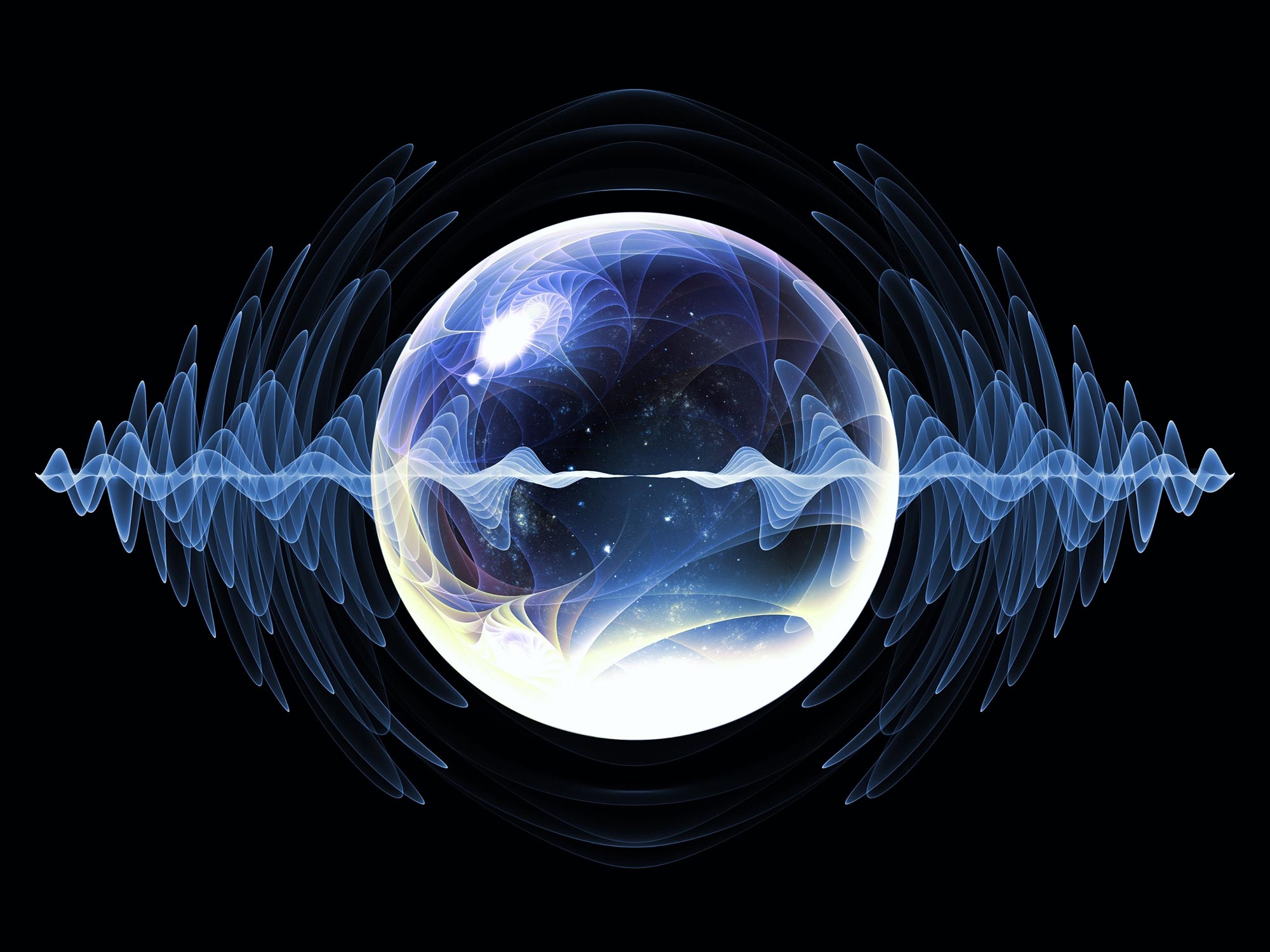Before Einstein, physicists thought particles and waves were two completely different phenomena. Particles appeared to be simple, but waves were clearly more complicated.
Waves are motion. They are not entities in and of themselves, but rather waves are the organized motion of a great many smaller entities. It shows in a figure a typical wave.
Waves are characterized by amplitude and wavelength. Amplitude A is how high the wave goes up above and down below its average height Wavelength w is the distance between crests. Waves move through space, and change with time. If the wave in this figure is moving to the left, its entire shape moves together as if sliding left. If we concentrate on what the wave is doing at a specific point, such as point X in the figure, we would see the wave height going up and down as time passes; it oscillates between its maximum and minimum heights. As it goes from maximum to minimum and back to maximum again, the wave completes one full cycle. If the wave goes through 9 full cycles per second, its frequency f is 9 cycles/second, or 9 Hertz, which is usually written 9 Hz. A computer that executes 5 billion instruction cycles per second has a frequency of 5 gigahertz (5GHz). The product of wavelength and frequency is always equal to the wave’s velocity: wf=v.
Before Einstein, what physicists thought they knew about particles and waves is shown in this below figure.
They thought particles were like small baseballs, localized and quantized. Baseballs are always in definite locations and are easily counted. Waves are different; they are neither localized nor quantized. Sound waves spread to fill a room; outdoors they spread over vast areas, like sonic booms. Waves are measured by how much, not how many. We don’t count sound waves; we measure the intensity of sound (loudness).
Intensity can have any value: it is continuous. The “amount” of particles is not continuous; it is quantized-we never see 2 ½ baseballs. The motion of particles is simple. Unless a force acts on a particle its acceleration is zero, a=0, and its velocity remains constant. As newton said, “an object in motion stays in motion, an object at rest stays at rest, unless acted upon by a force.” Waves have a much more complicated equation of motion.
Particles can move through air, through water, and also through empty space. Before Einstein, physicists thought particles could travel at any speed, given enough energy. Waves are different. Waves need substance to travel between, a medium. In fact, in a wave it is the medium that moves-a wave is the organized motion of its medium, Ocean waves need water, and “waves” in a sports stadium need enthusiastic fans. Sound waves are the moving of air particle. They can start with a car pushing air aside as it drives. The air is compressed, its pressure rises, and it pushes on neighboring air molecules that in turn push on their neighbors, etc., something like a cascade of dominos spreading outward in all directions. The momentum of a wave is set on by the assets of the middle. Loud sounds voyage at the same pace as soft sounds. Sound travels through air at the same speed regardless of the source, be it a person’s voice, a car going 60 mph, or a jet plane. This is because sound is the motion of air, not the motion of a care or a jet. That is why we can say “the momentum of sound” rather than “the momentum of car sound”.
Waves also diffract and interfere-Strange things no self-respecting particle would ever do.
Diffraction is illustrated in this image:
Here waves from two sources spread out and interfere with one another. Again, the crests are white and the troughs are black. The waves reinforce one another where their crests coincide; this is constructive interference. Where one wave crests when the other troughs, they cancel one another; this is destructive interference. Again there are dead zones-narrow strips, where the waves cancel one another completely, resulting in zero intensity.
By the end of the 19th century, it was well known that light exhibits diffraction and interference, and Maxwell had shown that light obeys a wave equation. Everyone agreed light was a wave, and physicist generally rejected Newton’s earlier idea that light was composed of particles. Clearly, particles and waves were completely different. At least, that is what everyone believed before Einstein explained the mystery of the photoelectric effect in 1905.
SALONI BHATNAGAR

